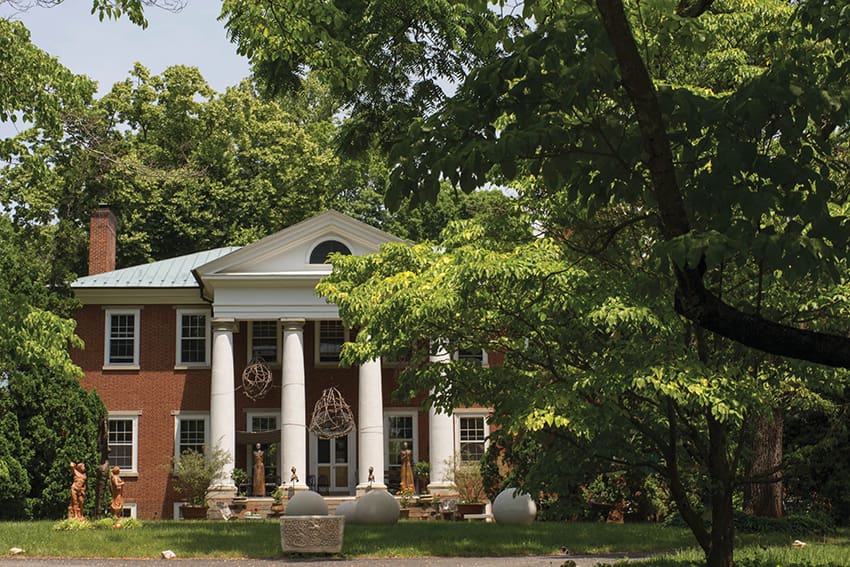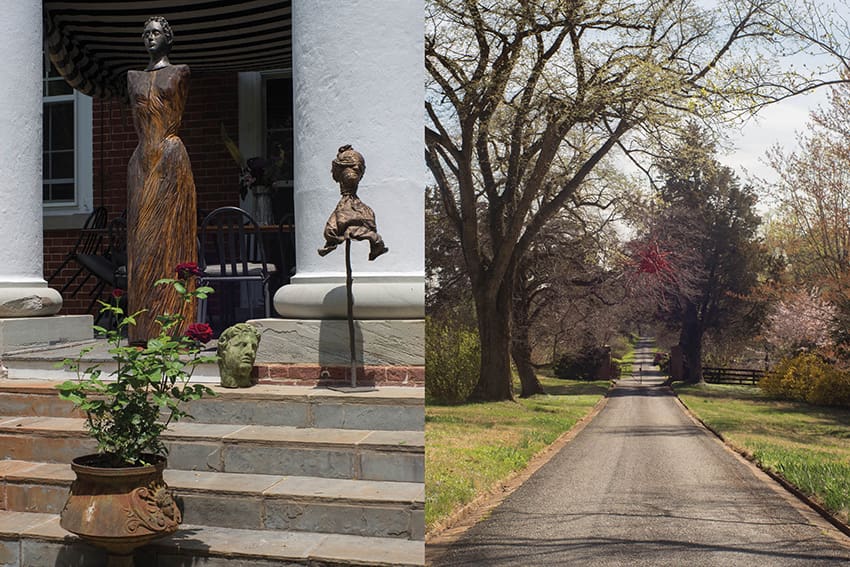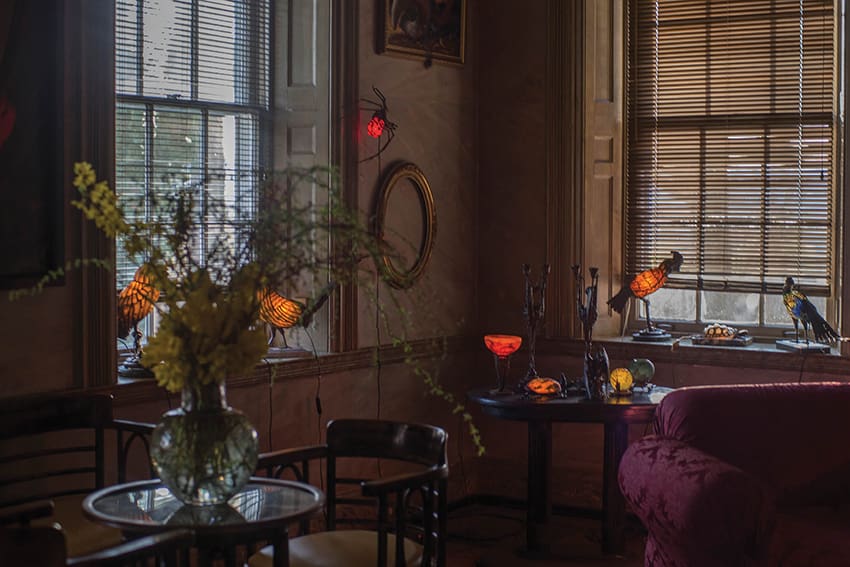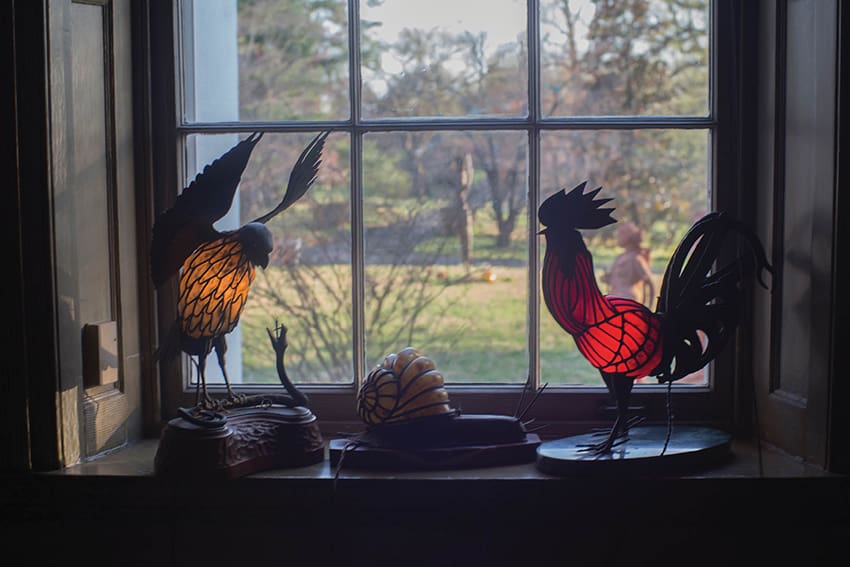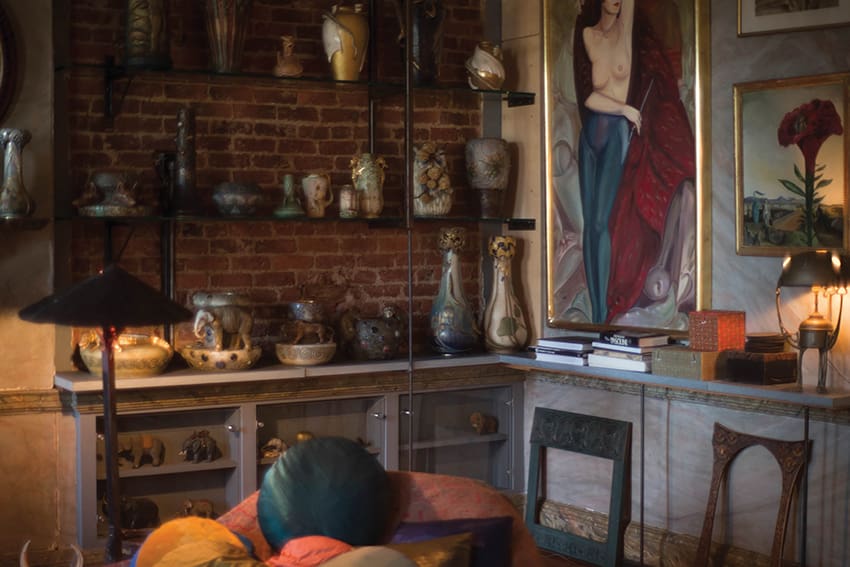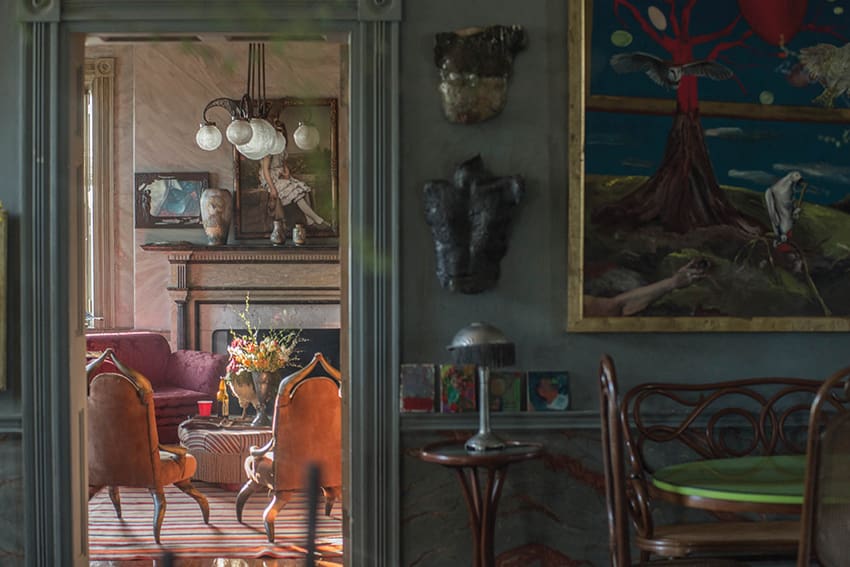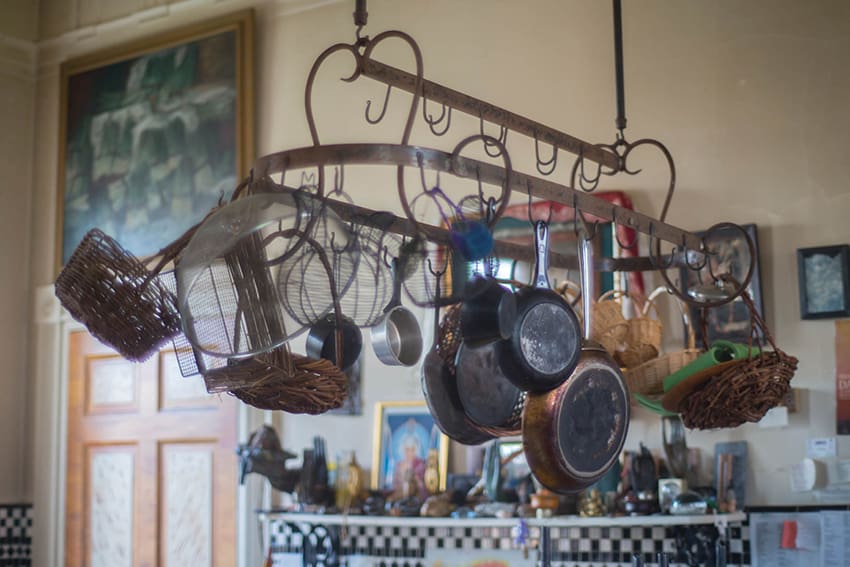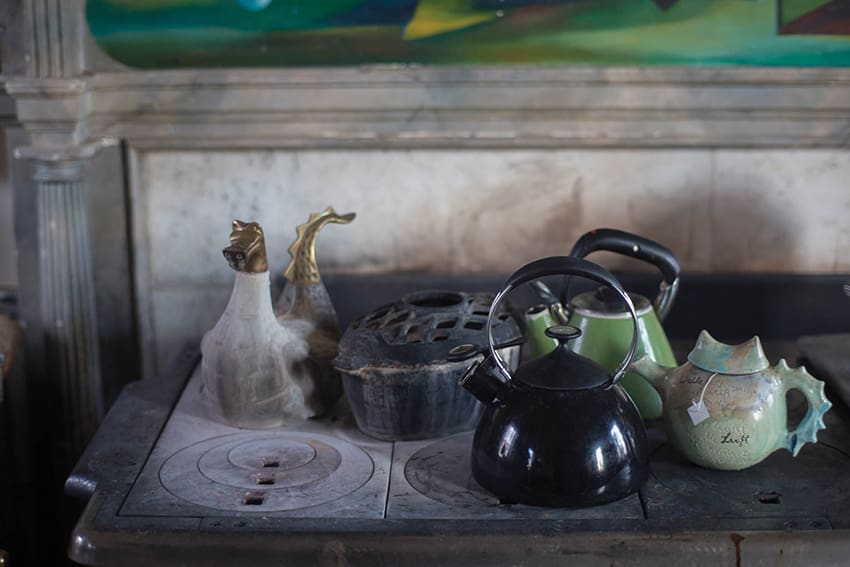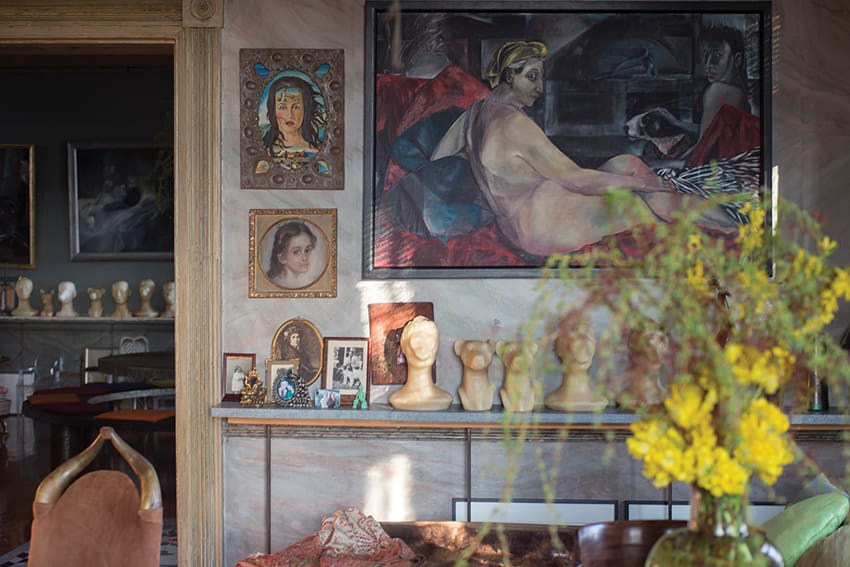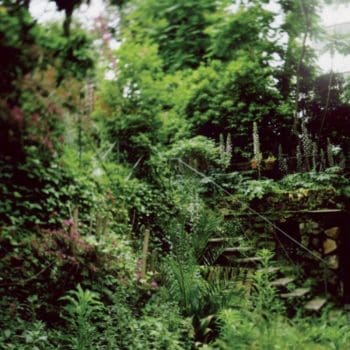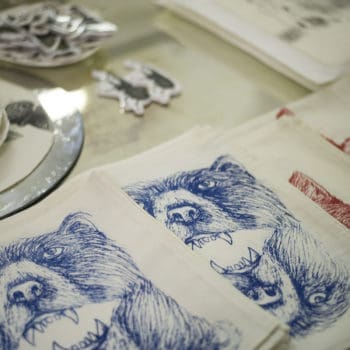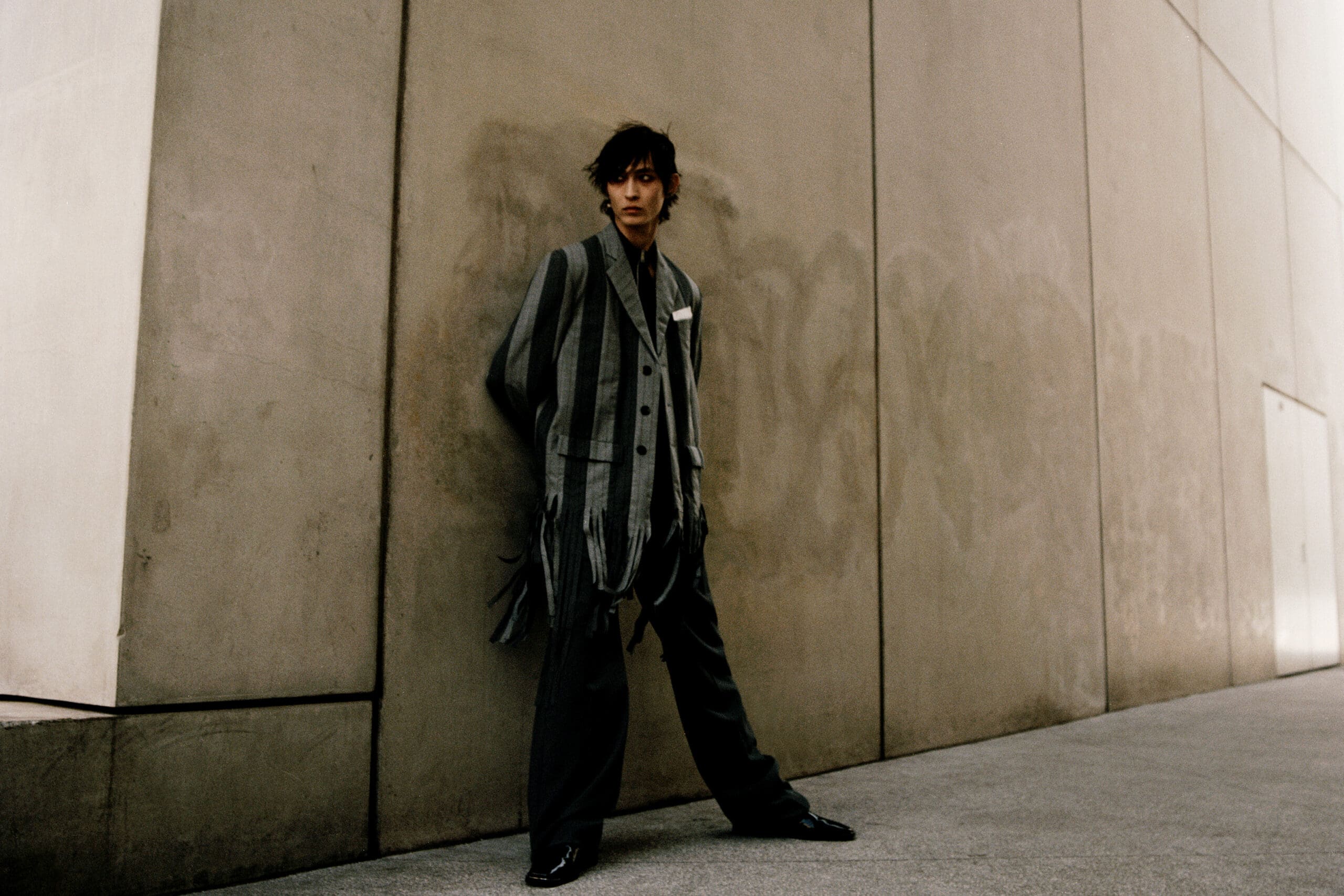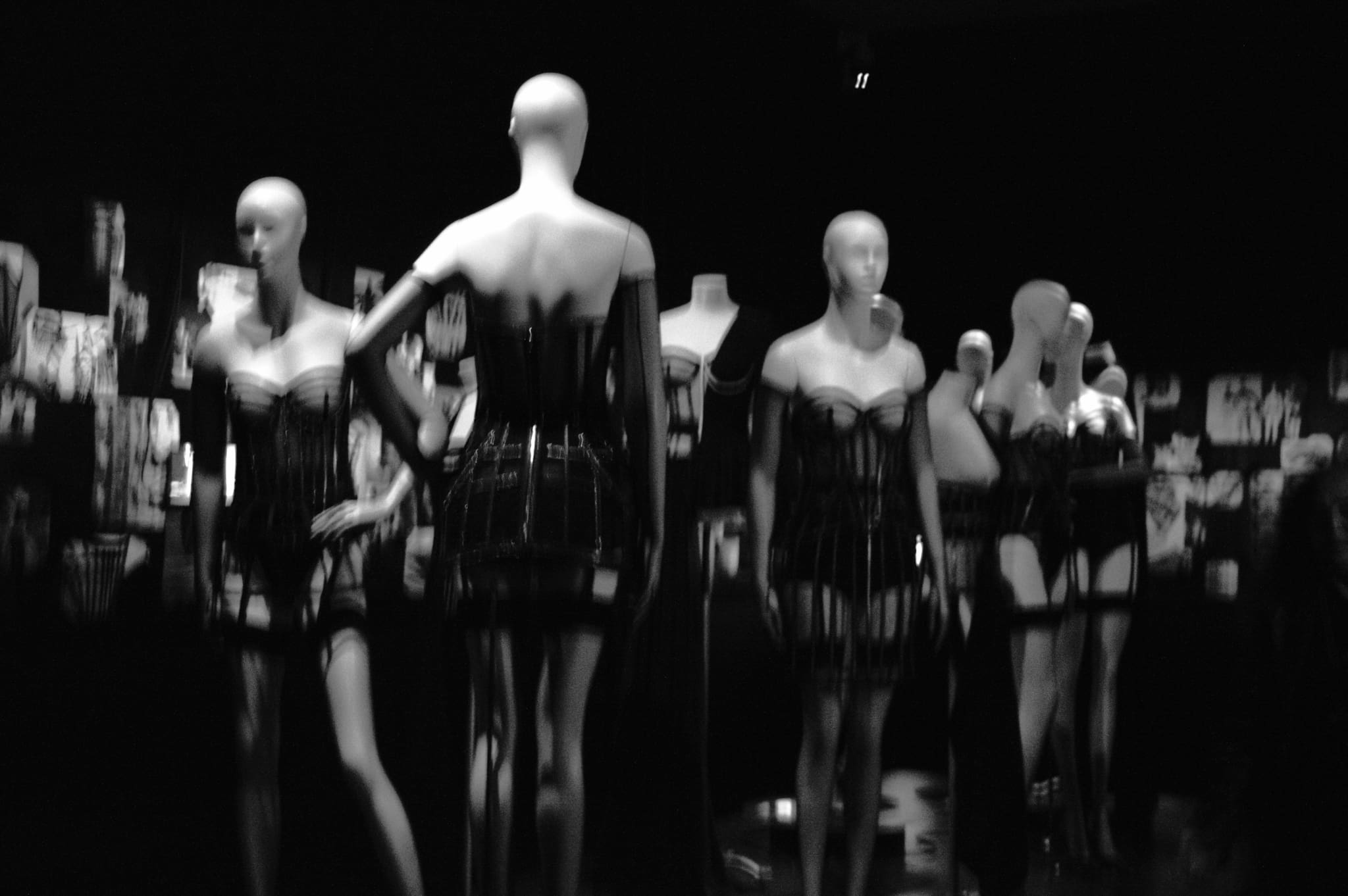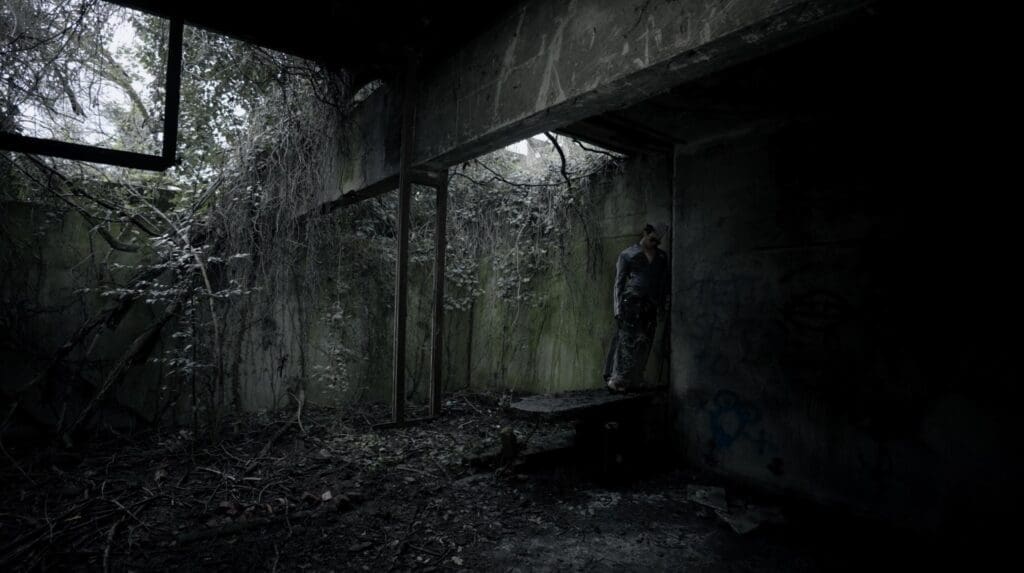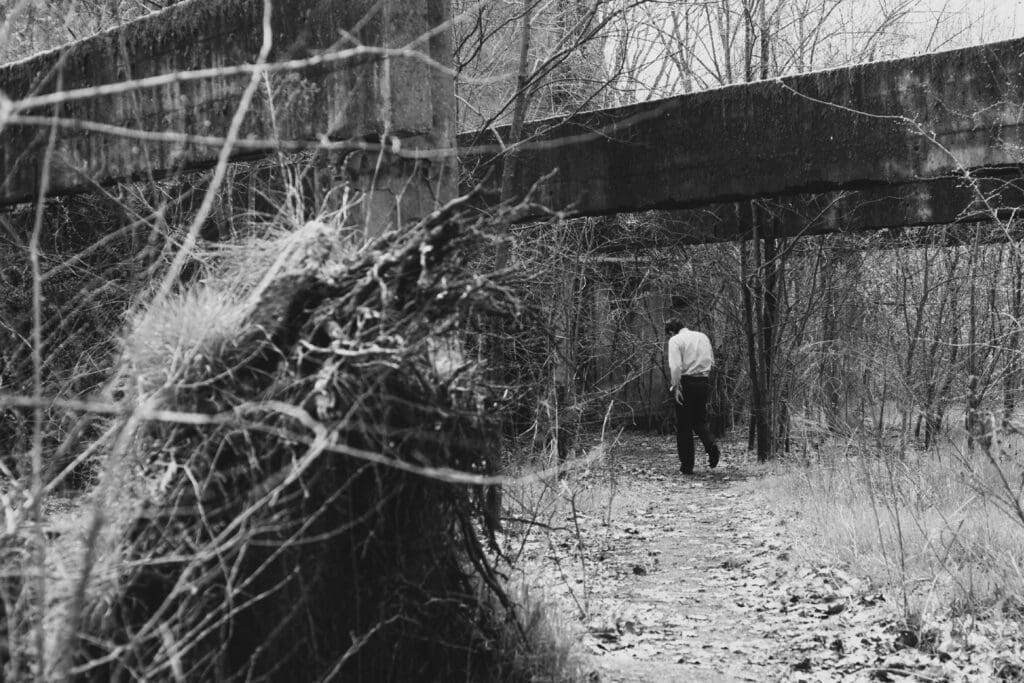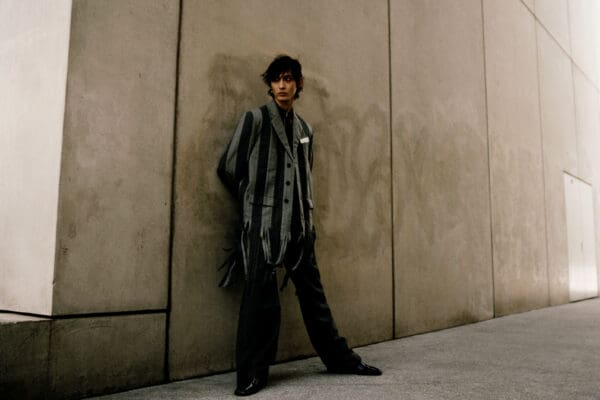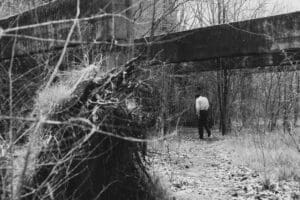by BEATRIX OST
photography GREYHOUSE
1.4
Nineteen eighty-one. I’m in my kitchen in our New York penthouse apartment. The tablecloth is a map of the east coast of the United States. I hold a pendulum over it.
Hmmm.
It tells us to head south.
We must find a place to “plant a tree,” a settlement in the countryside. A place of belonging, of congregation.
We have come to grasp that New York is a kind of drug, an obsession, a flickering star. One must sometimes leave, escape almost. Exhale. To remain true to oneself, to catch up with the things one postpones, the simple things. To dissect the whole and fit the fragments back together. A philosopher’s task, best undertaken far from the electrifying density of an exalted populace, out where “planting a tree” is also planting oneself.
So south we go. My New York friends wring their hands. The South is a strange place, they say. But my trusty pendulum has always managed to divine what matters most.
With my mother Adi in our car, we pass through an inordinately venerable Virginia gate, its pillars groaning beneath a shirt of vines.
The much-traveled dirt road winds below a canopy of trees.
Adi opens the window. From outside, the chirping of crickets dancing in the tall grass floods the car.
No sour meadows, she says, using the German expression for fallow soil. Mmmhmm, everything will grow here. Tobacco, wine, asparagus even.
I permanently register her voice, understanding immediately.
She smiles, pressing my hand, that reassuring matriarchal queen.
On through another iron gate, amidst the wild plunder of Southern vegetation, in the plissé folds of trees.
There stands a decrepit goddess—brick red, red brick—with enormous white columns. Shock of recognition.
Above: “Behind the wooden dame you can see part of the striped awning where we sit and dine. The little figure on the stick is a bronze of mine, a portrait of a spinster. The face below is stolen from a Roman stallion. What a rose is, you know.” Previous Page, on the left: Terra cotta figures, Apollo and Diana. “We found these while traveling in southern Italy, on the island of Ischia. They were crated and packed with spaghetti dishes from the same source and we expected that if they ever arrived it would be broken into a thousand pieces. But when the truck came laboring up the slender road and unloaded them on the lawn, the porcelain packing gave a deep sigh, its dying breath, and fell apart to reveal its contents perfectly intact. Apollo and Diana in turn were packed with such excellence, crated in individual corsettelages to hold them perfectly straight, that they could not break, period.” Center, between columns: Wood carvings with bronze heads, by Beatrix Ost. “Around 2000 I ventured to a nearby mill and found nine-foot tree trunks waiting for me to haul them home. Three of them. I started carving with a little electric saw, which I had never done before and initially swore to myself that I would never do again after these three. Their bronze heads open in mid-forehead, revealing the interior of a skull. One just shows the skull interior; another has a mechanism to protrude a golden tongue when opened; the third protrudes binoculars.” Hanging between columns: Woven baskets by Bruce Hlavin. “One Christmas, our beloved gardener, Bruce, surprised us with these exquisite vine creations, hanging illuminated between the columns.” Center, lawn: Five “Il Mundo” stone spheres by Beatrix Ost. “On one of our trips to Venice, we entered a gate that led us to, we suspected, a Venetian garden. Instead it was a stonemason. With all the conviction of a magician he assured me that he would not only manufacture them to my exact specs but send them to me with the ease of a card trick.” Marble bench by Jenny Holzer. “This bench came to us via Cheim and Reed Gallery. Jenny inscribes her benches with poems. This one begins with ‘A lot of professionals are crackpots’ and ends with ‘You can live on through your descendants.’ It’s the world’s best place to sit and have a smoke.”
Above, on the brick wall: “Our collection of Austrian Amphora vases with their pre-Raphaelite animal and floral motifs.” On the right wall: “One of my large paintings—if the head were not cut off, you would realize it is me—and next to it, an Italian landscape with a large coxcomb flower. Below: “A wooden frame by Gallee, carved with bats, a tin frame by Carabin, and a little anonymous oil lamp ca. 1900.”
I will never forget the trips to Italy, the villas by Palladio in Veneto, their beauty worn by centuries. A dress, ripped but intact.
Yes, she is just like my Italian memories. She carries the same immediate danger: falling in love without warning. It enters and disappears in the folds of reason.
The villa was designed by James Dinsmore, Thomas Jefferson’s pupil and lead builder. Both geographically and stylistically it is close to Jefferson’s own Monticello and Academical Village.
The bricks, baked in Williamsburg, are in fine form. The tin roof, imported from Germany, needs immediate attention. We replace it with handsome copper.
A Palladian exemplar, in the lush lands of Virginia, built by slaves. Oh yes, the slaves. Their house still stands at the edge of the estate, towards the dark wall of trees and kudzu. It was part of the Underground Railroad, complete with a hiding place we discovered beneath its foundation. We found nineteenth century newspapers stuffed between grey boards for insulation.
Estouteville is enthroned on a hill, surrounded by the tallest trees, to shade its beauty. The iridescent colors of the peacocks’ cloaks sweep the devout grass. The copper roofs crown the rooms below with the precision of the golden section. The walls climb 14 feet and are met with capitals of Mediterranean elegance.
The great hall, the heart in the center, divides the two halves of the building into identical twins. Along its capital runs a frieze of ox skulls, symbols of fertility. We feast there. We dance there. We listen to recitals and recitations, music and poetry, and to the sound of a horde of children running, running around the table in the center, chasing one another’s tails.
This elegant Italianate dwelling carries the burden of responsibility. She is the Greta Garbo of elegance. Her Palladian nobility, a replica of perfection in beauty and scale, touched the heart of a great man and compelled him to import it into his own fledgling country. His hand signed the document that founded a nation. His eye, his spirit, studied the old world, old Europe, to transplant it into the wilderness of his new land. She is a wedding gift for a lady from the d’Estouteville family of France.
Between the trunks of the trees dances the Southern humidity, splendor in the land of “Indians.” How could they agree with its aura of permanence? They must have laughed, rode past, brought woven blankets to trade.
Every detail shows true thought: how it intersects with the points of the compass; the tall columns on both sides, east and west, holding up a dormer portico to balance the side wings, almost in the form of a bird in flight.
I design a striped baldachin to be stretched between column and wall, shading us by day and sheltering us after sundown as we dine and entertain at a long table.
We listen to the woods, to the million voices of nature, that chorus of frogs at dusk. It arrives with the heat, with summer mating, a singsong that encircles us, the swelling and shrinking cry of the wild.
But in winter, when it snows, it is silent, like a church. You can hear your own thoughts.
Love overpowers me at first glance. We bathe and dress Estouteville again as one does an orphan. She has been neglected but never unloved. Adored, respected.
Her doors: ten feet tall. Her floor beams made from the tallest pines. A fine, functioning dumbwaiter from the basement kitchen to the main floor dining room. A summer kitchen in a little outbuilding connected to the main house by a “whistle lane”: so called for the unappetizing reason that the slaves had to whistle to prove they were not nibbling on the dishes. Close by, a 30-foot chasm once covered as an ice house. A small pool where the original building site stood, when the place was called Calicanthus Hill.
In the great hall are four windows with three large panels each. You can slide them across one another for ventilation. But back in the nineteenth century, before electricity, when the Skipwiths and the Coles were in residence, ventilation meant something quite different. A slave ran up and down, up and down the length of the great hall, holding a gigantic fan-creation fastened to the ceiling. Up and down he ran, in the hell of summer.
I cover the remnants of the mechanism with one of my paintings, a scene of an abandoned picnic in the mountains.
We are far removed from highway civilization, just like back in the days when Estouteville was laid down by slaves.


